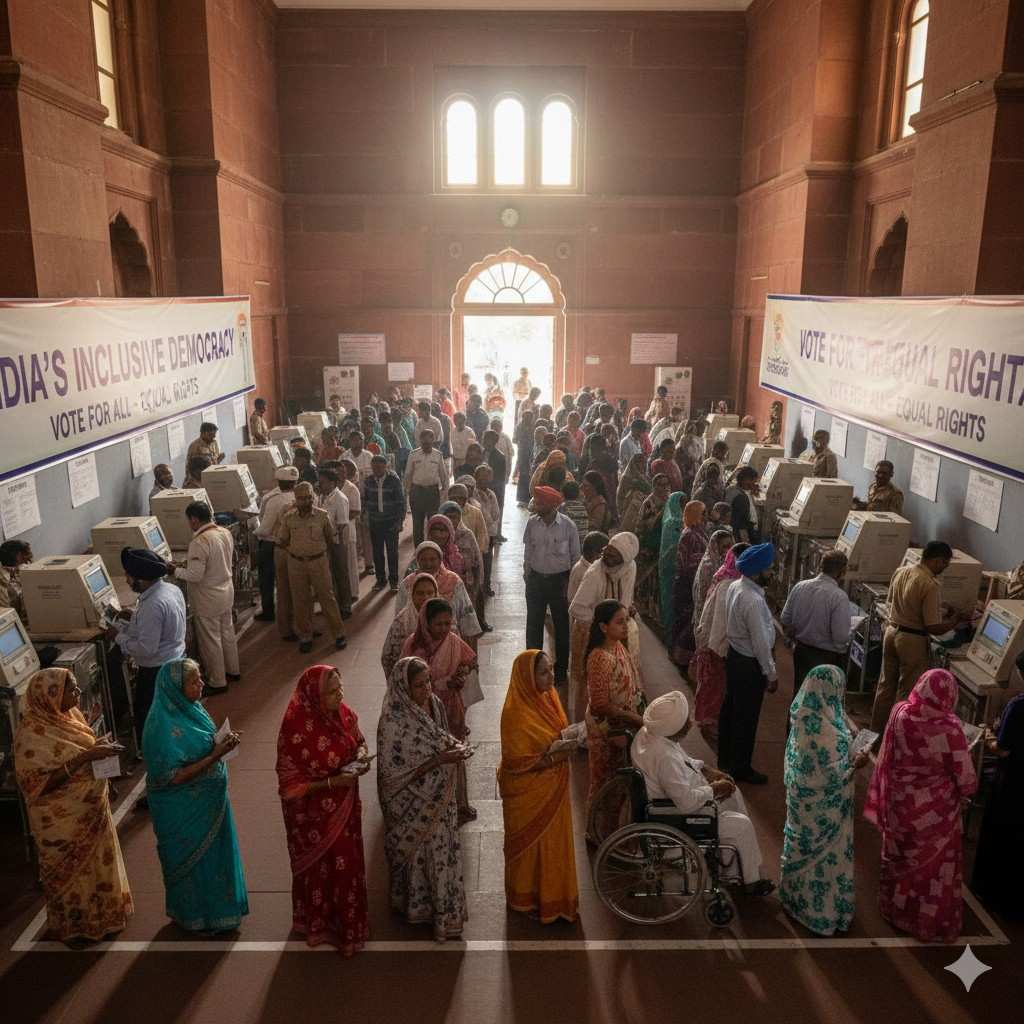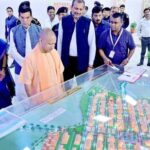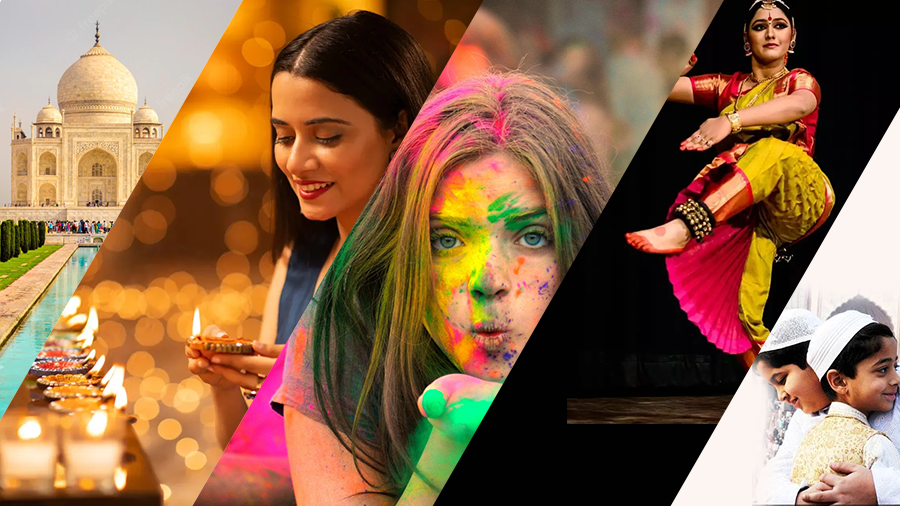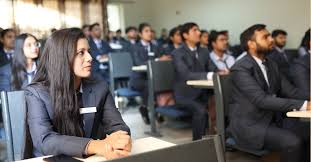
A Journey of Hope: India’s Strides Towards Inclusive Democracy
- admin
- November 25, 2025
- Development
- 0 Comments
Celebrating India’s Commitment to Representation and Equality in Governance
Key Metrics:
- Electoral Scale: Over 900 million registered voters participated in the 2019 general elections, with a record turnout of 67.4%.
- Constitutional Provisions: India ensures representation for marginalized communities through 15% reservation for Scheduled Castes and 7.5% for Scheduled Tribes in legislative bodies.
- Gender Representation: Women hold over 46% of elected positions in Panchayati Raj Institutions, fostering grassroots leadership.
- Youth Engagement: Nearly 65% of India’s population is under 35, highlighting the potential for dynamic civic participation.
News Body
India’s democracy, the largest in the world, is a living testament to resilience, diversity, and inclusion. Over the decades, the nation has made significant strides in ensuring that every citizen, irrespective of caste, gender, religion, or region, has a voice in its governance. This journey of hope reflects the aspirations of a nation committed to building a more inclusive and equitable democracy.
Empowering Marginalized Communities
India’s democratic framework is built on the principle of inclusivity. Through affirmative action, the country has ensured representation for historically disadvantaged groups such as Scheduled Castes (SC), Scheduled Tribes (ST), and Other Backward Classes (OBC).
Reserved seats in Parliament and state legislatures enable these communities to participate actively in decision-making processes. Additionally, government initiatives like the Stand Up India Scheme and scholarships for underprivileged students provide socio-economic opportunities, bridging historical gaps.
At the grassroots level, the Panchayati Raj system empowers marginalized groups to lead local governance, fostering greater representation and accountability.
Gender Inclusion: Women Leading the Way
India has made significant progress in promoting gender inclusion within its democratic processes. Women’s reservation in Panchayati Raj Institutions has transformed rural governance, with over 1.3 million women holding elected positions. Women sarpanches (village heads) are leading initiatives in education, healthcare, and sanitation, showcasing the transformative power of inclusive leadership.
Nationally, the 17th Lok Sabha marked a milestone with 78 women members, the highest in India’s history. However, the need for greater representation in higher legislative bodies remains a pressing challenge, with ongoing debates on the Women’s Reservation Bill seeking to address this imbalance.
Religious and Cultural Diversity in Action
India’s democratic ethos is deeply rooted in its religious and cultural pluralism. Hindus, Muslims, Christians, Sikhs, Buddhists, and Jains all contribute to the nation’s democratic fabric.
The country’s governance reflects this diversity, with leaders from various religious communities serving at all levels. Interfaith dialogue and collaborative policymaking ensure that policies address the needs of all communities, fostering a sense of unity amid diversity.
Festivals like Diwali, Eid, Christmas, and Guru Nanak Jayanti are celebrated across communities, reinforcing the spirit of coexistence.
Youth Participation: Shaping the Future
India’s youth, representing nearly 65% of the population, are pivotal to the country’s democratic progress. Their active participation in elections and policy advocacy has brought issues like climate change, digital rights, and education reform to the forefront of political discourse.
Digital platforms have amplified youth voices, enabling them to organize movements, challenge outdated norms, and demand accountability. Initiatives like Skill India and Startup India empower young people to contribute meaningfully to the nation’s development while participating in its democratic processes.
Challenges on the Path to Inclusivity
Despite these advancements, India’s journey towards an inclusive democracy is not without challenges. Economic disparities, political polarization, and gender biases still hinder full participation for some groups. Bridging these gaps requires continuous efforts to strengthen education, healthcare, and social infrastructure.
Additionally, combating misinformation and fostering civic education are essential to ensuring that every citizen can make informed choices in the democratic process.
Conclusion
India’s strides towards an inclusive democracy reflect its commitment to unity and equality. From empowering marginalized communities to promoting gender and youth participation, the nation’s democratic framework continues to evolve, embracing the diverse aspirations of its people.
As India progresses on this journey of hope, its ability to address challenges with resilience and innovation will determine the strength of its democracy. By fostering inclusivity at every level, India reaffirms its position as a beacon of democratic ideals, inspiring nations worldwide.



